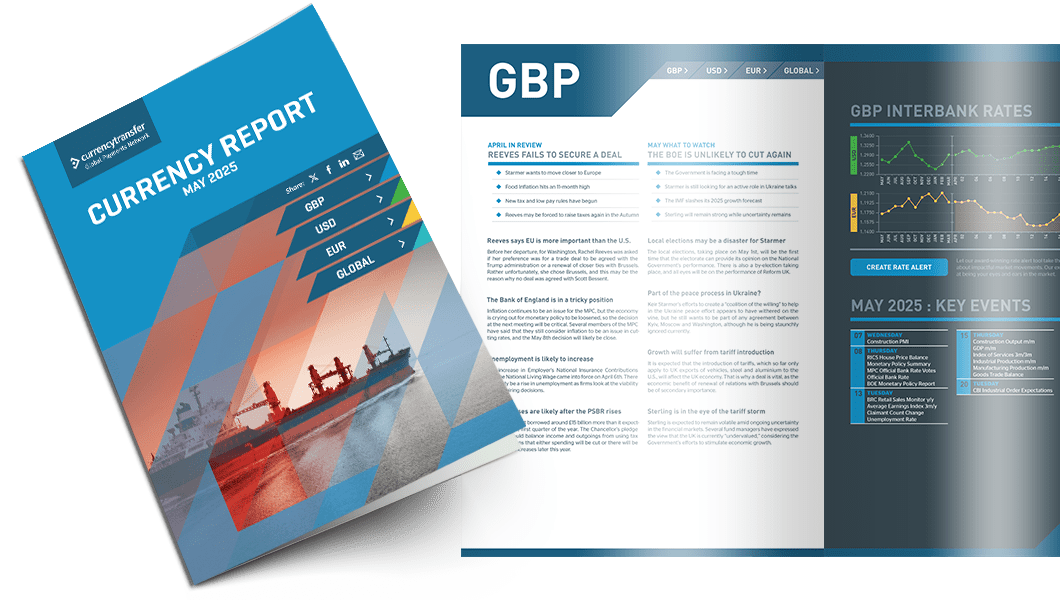
Highlights
- Hunt Delivers a Budget for Long-term Growth
- There will be no rush to cut rates – Powell
- The IFO Institute has cut its estimate for German growth in 2024
There were no surprises in the measures announced
Hunt delivered the cut to National Insurance that had been expected as part of a series of measures, none of which came as a surprise, as they had all been carefully leaked to gauge public reaction.
It was a typical pre-election budget, in which the “giveaways” were front-loaded for maximum effect.
While economists were expecting growth predictions to be downgraded, Hunt sprang a surprise by confirming that the Office for Budget Responsibility had raised its estimates for GDP to grow by 0.8% this year and a marginally higher amount next year.
Overall, the message from the Budget was that the Government believes that its long-term plan for the economy is beginning to work as inflation is expected to fall to reach the Treasury’s 2% target in the “coming months”, while the recession is going to be over as soon as it began.
Many observers said that it felt like yet another reset by the Government, it is unlikely to make a difference at the polls and almost certainly won’t make voters feel sufficiently confident to vote for a Party that lost the confidence of the country.
Whether growth is to be 0.7% or 0.8% this year is not going to make a dramatic difference in the “grand scheme”. The Government is admitting that the economy will continue to “bump along the bottom” for the next two, or possibly three years, while the U.S. and parts of the Eurozone see higher levels of growth and activity.
Hunt was quick to make clear the areas of the economy in which the UK excels, but that will make little difference to the “man in the street”, who is still shackled by double-digit food inflation and the largest fall in living standards for fifty years.
The Labour Party appears to be devoid of ideas, and its leader was able to do anything other than make comments about the recent past, rather than putting forward radical ideas to change things for the better.
The country has become “unused” to a Government with a different Manifesto, but that difference in personnel may not be enough to fire up a major economic recovery.
The pound took the measures announced yesterday in its stride since the market is more interested in monetary policy than fiscal policy. It climbed to a high of 1.2761 and fell back to close at 1.2738 as the dollar continued to test its lows for the year.

Read our latest currency report
Most impactful events planned this month and how they could impact your business
The “waiting game” goes on
Since the economy is continuing to produce jobs and growth at a better-than-acceptable level, Powell and several of his colleagues see no reason to cut interest rates “for the sake of it”.
The President of the Philadelphia Fed, Patrick Harker, spoke earlier in the week about his opposition to any further hikes, even though the economy may be overheating. He feels that interest rates at their current level will gradually produce a soft landing for the economy, which is the Fed’s purpose.
He went on to say that he favours a series of rate cuts, which should start in the second half of the year. It is not impossible that the cuts could easily “spill over” into 2025.
The Fed’s Vice Chairman for Supervision, Michael Barr, spoke of his view that the “bumpy path lower” for inflation means that the “jury is still out on a soft landing for the economy” although a recession this year has now been ruled out.
The jobs data published so far this week has been inconclusive. 140k jobs were created in the private sector, while the data for job openings illustrate the continuing “tightness” of the labour market.
Nothing in the data predicts what will happen when the non-farm payroll data is published tomorrow. While the market is driven by the headline figure for new jobs created, the Fed will be more interested in the rate of unemployment and wage growth.
Increases in average earnings are predicted to have fallen from 4.5% to 4.4% while, for what it’s worth, the economy is predicted to have created 200k new jobs. Traders and investors will also be keen to see if there is a significant revision to the January number.
If the headline number is above or close to the 200k number, the Fed is likely to delay any rate cut until it is close to 100k regularly.
The dollar index is not attracting any buying interest, even though it is close to its low for the year. The market appears to have the almost opposite view of the dollar compared to the Euro. The common currency’s only “saving grace” is the fact that the ECB is still hawkish on interest rates.
Yesterday, the index fell to a low of 103.20 and closed at 103.37. It looks destined to test the low at 102.90 which will complete the technical pattern that began at the start of last month.
The ECB meeting is the most eagerly awaited since last September
History may well show that Germany became too comfortable in its position and failed to “change with the times”.
Although there have been several geopolitical events that have hit the country hard, in particular, the Russian invasion of Ukraine and the rise in energy prices that the subsequent war has created, the German economy has been reliant for too long on heavy industry.
While other nations, the U.S. in particular, allowed their manufacturing capability to be “exported” to countries like China which have a low-cost base, Germany has jealously continued to “do what it is good at”.
Now it is unable to sell the goods it manufactures because of the prices that are dictated by far higher costs, including German workers’ wages.
There needs to be a radical overhaul of the economy which will take several years, while during this time other Eurozone members will have to “shoulder the load”. Brussels may even find itself regretting not being more accommodating to the UK at the time of Brexit.
Later today, the Governing Council of the ECB will meet to discuss monetary policy. The market is clear that interest rates will not be cut at this or probably the next meeting, given the over-reliance on first-quarter wage data, which won’t be available until the end of next month.
The best that observers can hope for is a marginally less hawkish statement from Christine Lagarde following the meeting, although there appears to have been little change in the attitude of the most hawkish members of the Council.
Tomorrow sees the publication of Q4 GDP data, and there is a possibility, however remote, that since the Council will have advanced knowledge of the numbers if the economy has dipped into recession, it may influence a more dovish stance.
The euro continues to defy gravity. Yesterday, it climbed to a high of 1.0915 and closed at 1.0899. Technically, there is no reason the single currency cannot challenge the 1.10 level, but there are sure to be significant sell orders between its current level and 1.10.
Have a great day!

Exchange rate movements:
06 Mar - 07 Mar 2024
Click on a currency pair to set up a rate alert
Alan Hill
Alan has been involved in the FX market for more than 25 years and brings a wealth of experience to his content. His knowledge has been gained while trading through some of the most volatile periods of recent history. His commentary relies on an understanding of past events and how they will affect future market performance.